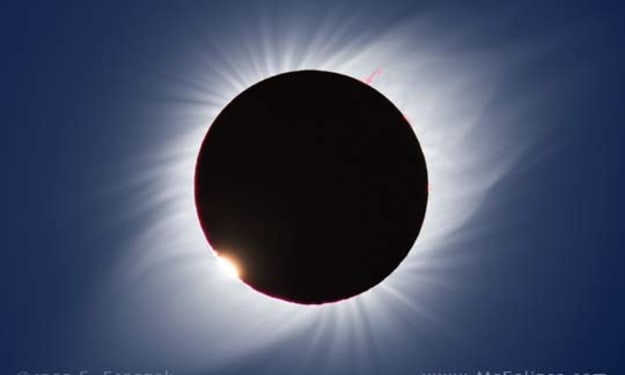Pumpkin Spice Lattes = Labor day
A brief history of this holiday

To me, Labor Day was always linked to my birthday- granted it only happens once every seven years, but it feels like my own special day. Unlike my mother, who always gets to share her birthday with Veterans Day! For the last 21 years, it was a free day off of work for me- an extended birthday weekend with pay. It is also the undeclared official start of school, Pumpkin Spice Latte's, NFL games, and the end of hot dogs and wearing white. I am not great at celebrating holidays, but as I am now at a pivotal birthday, I think I should get to know why we celebrate certain holidays. And, of course- I found the memes to make this so much more fun.
What is Labor Day? It is the first Monday of September. According to the U.S. Department of Labor, it is a 'national tribute to the contribution's workers have made to our country's strength, prosperity, and well-being.' I am feeling more patriotic already! The first Labor Day was celebrated on September 5, 1882, in New York City (on a Tuesday of all days) formally promoted by the Central Labor Union and the Knights of Labor. It is reported that 10,000 citizens marched for labor rights on the streets of Manhattan; however, according to the Constitution Center, this number was 20,000 citizens. But it wasn't a celebration- it was a peaceful protest because Americans were working an average of 12-hour days, six days a week. The irony is that regardless if it was 10,000 or 20,000 citizens- they gave up a day's pay to get their point across. It wasn't until 1894 that President Cleveland declared Labor Day a federal holiday, but it did cost the lives of 34 citizens to get national recognition.
I know you want to know why 34 citizens die and America gets a Federal holiday! You're in luck- I am going to tell you the back story. The 1890s has been referred to as the "Terrible Nineties" starting with the Panic of 1893, which was the worst financial crisis and depression in the country until the Great Depression of the 1930s. The panic mainly was the result of the Philadelphia and Reading Railroad Companies closing their doors in 1893 and the Sherman Silver Purchase Act that required the U.S. Treasury to make over 4 million ounces of silver into coins every month. This act had good intentions as it was passed because farmers were drowning in debt and needed help from the federal government to keep production flowing. It sounds like a good idea to me- give money to the farmers to grow the food and ship it to the dinner table. Uhhh, but the wealthy did not see it that way. They believed that money that was backed by silver was worth less than money backed by gold- so they turned in all their silver for gold and depleted the gold reserves. So now we have no gold, silver is flowing, but the Railroads are going bankrupt and laying people off. On June 27, 1893, the New York Stock Market crashed, followed by the failure of 642 banks and 16,000 businesses and numerous train-related closures. By 1894, the unemployment rate increased from 3% to almost 19% of Americans, about 3 million citizens. In other words, the farmers got the bailout, but there is no transportation for the food, and the country is broke.
The story gets better! President Cleveland convinced Congress to repeal the Sherman Silver Purchase Act, which quickly angered the farmers and miners relying on that money to help offset the increase in transportation rates. So, President Cleveland got with his old friend J.P. Morgan and came up with a deal that Morgan would help sell government bonds. This put money back into the federal bank, and Morgan scored a considerable profit, but the rest of the unemployed and struggling business owners were left to fend for themselves.
That year, a businessman named Jacob Coxey started advocating for public works jobs for the unemployed. He organized a march of unemployed laborers from Massillon, Ohio, to Washington D.C. to demand that the federal government does something for the American people. The several hundred people called themselves Coxey's Army. Still, unfortunately, both President Cleveland and Congress ignored the weary travelers, and several of the leaders were arrested for trespassing when they walked on the grass of the U.S. Capitol.
That's not all. Bear with me as we get through the many spider webs of the 1890s and the creation of Labor Day; it will be worth it in 2 minutes. As the Panic of 1893 reached further and further, the Pullman Palace Car Company who manufactured luxurious sleeper railroad cars owned by George Pullman, fired half of his 6,000 employees and then cut the wages of the other half by 25%. On top of that, he raised the rents of company homes and stores where he required his workers to live and shop. It didn't take long for the employees to realize that they were drowning in debt, couldn't afford food, and worked 12-hour days, six days a week. They wanted George Pullman to rework their contracts, but George refused. George knew that if held out, he would be able to get 'scabs' to come in and take over the jobs of his current employees. Scabs were usually African Americans who were still fighting for rights and jobs after Reconstruction Era, and this caused severe racial tension in the mid-west and west coast.
On May 11, 1894, the President of the American Railway Union, Eugene V. Debs, ordered all union rail workers to stop working on trains with a Pullman Sleeper Car. Essentially, every train had one attached, so all rail transportation stopped as the strike was spread over 27 states, 29 railroad companies were affected, and 125,000-250,000 workers' walked off' the job rather than handle Pullman Cars. The number of personal who walked off is debatable as the strike was happening at various locations across the United States, and no real records were kept. So, the Railroad managers asked for federal assistance, and it seems like President Cleveland, and Congress was actually in for that telephone call because they quickly sprung to action. I am not going to lie; Congress and the President came up with a brilliant plan- attach a mail car to each train. Since it was a Federal crime to stop the mail, President Cleveland could use over 12,000 federal troops to handle the trains and ensure movement.
July 3, 1894, Federal troops marched into Chicago, Colorado, Nebraska, Iowa, Oklahoma, and California, and by July 4, cities across the United States saw a new kind of Independence Celebration. Strikers started a fire at the World's Colombia Exposition; train cars were being set on fire. In Chicago, 13 people were killed, and 53 more were seriously wounded. In Glenwood Springs, Co, 50 feet of the Midland Railroad track was destroyed. In California, the militia was met with men, women, and children who patiently waited until the Federal troops arrived, leaving rail cars full of meat and fruit rotting in the California summer heat. In all, there were over 50 million dollars in damages throughout the country because of this strike. A strike that's main focus was to get Pullman to the negotiation table over wages and living conditions of his workers.
The strike was over by Aug 1894 when Debs was arrested and sentenced to 6 months in jail. An estimated 34 people were killed, the American Railway Union was destroyed, and the workers returned to work with less power and privileges than they started with. President Cleveland offered the following words to the American people- "While the people should patriotically and cheerfully support their Government, its functions do not include the support of the people." I don't know about you- but that did not give me a warm and fuzzy.
Originally Labor Day was established as a holiday that individuals states could declare. Still, the events of 1893-94 rushed President Cleveland to push for it to be declared a Federal holiday- at least that is one theory. Another theory is that the law was already going through the system, and it just so happen that the law was passed at the end of the strike. This was the real beginning of unions and workers rights in America. I believe that Labor Day is a national recognition that skilled labor is more important than big businesses. Unfortunately, there had to be a country-wide strike to get credit for the majority of the American citizens, but I guess that is how the train derails.
So, on this upcoming Labor Day, remember that it was a strike by an unorganized railroad union that caused 50 million dollars in damages that got you that paid day off! What is more American than that?
Interesting side notes-
The Pullman Sleeper car became the token piece for the upper-middle class and the wealthy when it was Mr. Pullman that fitted the railroads from Chicago to Springfield in the last leg of President Lincoln's funeral. The cars were so finely dressed up that everyone wanted to ride in the Pullman Sleeper car. It was a fantastic advertisement in the days before commercials and Twitter.
Pullman then used the millions of dollars he made off the Sleeper Car advertisement and created his own town- Pullman, Illinois, where his factory was located. This is why he was able to control rent and prices at the store for his workers. After the strike, a federal commission investigated Pullman and found Pullman to be at fault even with young Robert Lincoln (President Lincoln's son) as his lawyer. He was ordered to sell off his town, and three years later, Pullman died, ironically leaving instructions that his body be encased in concrete in fear that his grave would be desecrated.
Eugene Debs was greeted by thousands of cheering fans when he emerged from his 6-month jail sentence. But, frustrated how the strike turned out, the federal government's plot in the play, and his six months jail sentence, Debs soon turned to Socialism, and he led the Socialist Party for years while running for President 5 times (and losing every single time).
About the Creator
Rose Loren Geer-Robbins
One does not simply become a famous writer! It takes many hours before the sun comes up and even more when the sun sets. I am never sure what world I am living in, the one that I am writing about or reality.







Comments
There are no comments for this story
Be the first to respond and start the conversation.